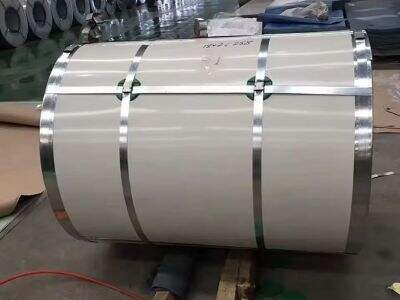Often when people build houses or make machines, they need to use metal sheets. There are different types and sizes of these sheets and sometimes it can be tricky to know which is the right one for a particular job. There are numerous metal sheets available such as GI sheets and CRC sheets. In this article, we will cover some more about these sheets and how they differ from one another.
What Are GI and CRC Sheets?
To start with, what are GI and CRC sheets? GI is Galvanized Iron. This indicates that these sheets are made of iron coated with a layer of zinc. This zinc coating is especially important because it helps prevent the iron from rusting. The gi sheet are very much preferred for outdoor applications where they might be exposed to rain or moisture because rust can weaken and make metal useless.
Crc stands for cold rolled coil. These CRC sheets are made a little differently. Cold-rolled steel sheets are made by passing hot metal through a cold press. Due to this process, the CRC sheets are smoother and have a comparatively uniform thickness than the other metal sheets. Due to their smoothness, CRC sheets can exhibit a very good appearance and hence they are widely used in places of aesthetic considerations.
GI vs. CRC Sheets in Industry
GI and CRC sheets are extremely widely used in factories and other industries. They are considered by many as a strong, durable, and economical solution to various design projects. But each kind of sheet has its own distinct benefits. GI sheets, for instance, are ideal for outdoor work because their zinc coating makes them rustproof. This characteristic makes them particularly good candidates for roofs, fences and outdoor furniture that is exposed to the weather.
In contrast, CRC sheets tend to be more effective when used indoors. They are an ideal choice for projects needing a finished appearance due to their smooth surface. CRC sheets are used to make parts for automobiles, electronics, and home appliances such as refrigerators and air conditioners. In general, understanding where to apply each type of sheet can assist you in selecting the appropriate sheet for your project.
Comparing GI and CRC Sheets
Now that we know what GI and CRC sheets are used for, let’s take a closer look at the two types. The first and foremost difference is CRC sheets are much smoother than gi steel sheet. This smoothness is important because it makes CRC sheets better for use in indoor applications where a clean and tidy aesthetic is required. But if you want something looks good, CRC sheets would do the job better, for example.
Aluminium is also less dense than steel but lacks the grain structure and orientation that steel has. This indicates they will last longer when used in the outside. On the other hand, CRC sheets are not coated, and they are prone to rust if not well cared for. And if you require to weld or join the sheets then the CRC sheets are quite easy to handle because of their smoothness and flexibility.
How GI and CRC Sheets Are Manufactured
To understand GI and CRC sheets, you must first be aware of their making process. GI sheets are made by galvanizing iron in a bath of molten zinc. This process forms a bond between the zinc and the iron, ultimately making a stronger, more durable rust-resistant sheet. This coating protects the iron and makes the sheet last for many years.
On the other hand, the manufacturing process of CRC sheets is different. They’re created by rolling hot steel through a cold press that smooths out the sheets and makes their thickness more consistent. This process imparts CRC sheets with distinctive properties, enabling it to be used where the finish of the product is of high significance.
When To Use GI and CRC Sheets
GI Sheets Vs CRC Sheets: Things You Should Consider Before Using As we studied above, GI sheets are resistant to rust and corrosion, which makes them more appropriate to use in outdoor applications. This makes it the perfect solution to projects that will be outdoors and exposed to the elements.
CRC sheets due to their smooth surface appear more attractive, therefore are more suitable for indoor applications. The thickness of the sheets is also a significant consideration as this will impact the materials durability and strength. Thicker sheets are usually stronger, but you also need to consider the size and shape of the sheets required for your particular project. It is important to ensure that the sheets will be suitable for your design process.
Ultimately, GI and CRC sheets are each with its distinct characteristics as well as advantages that cater to different needs and specifications. This makes the gi steel sheet price easier to be used for outdoor projects that must resist rust, while CRC sheets are more suitable for projects indoors, as they have a smooth surface and a polished look. Typically, both sheets are robust and durable and widely used in many industries. It's essential to consider the specific needs of your project when selecting which one to use, such as whether it is for indoor or outdoor use, the thickness of the sheets, and their size and shape. ROGO can help you choose the right type of sheet, if you have any questions. They have one of the largest pulps and offer their support to make a worth account.

